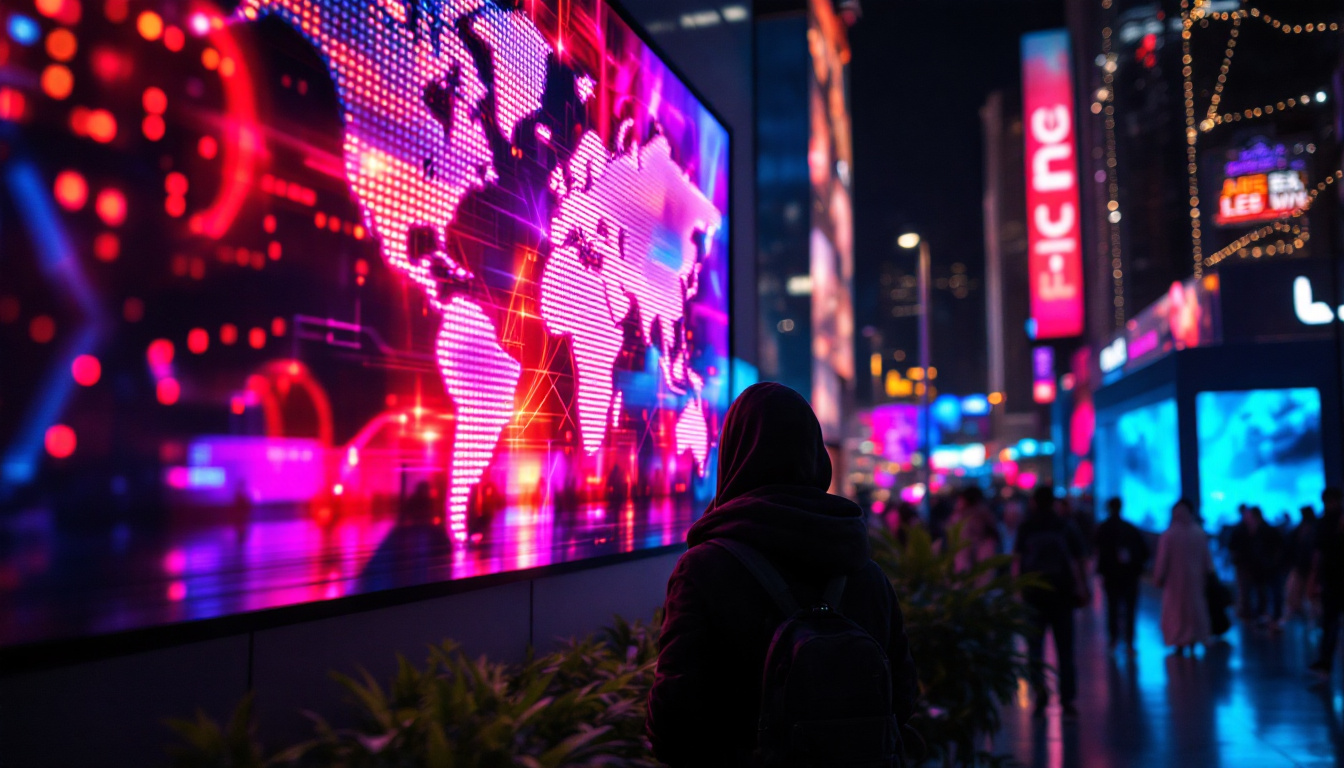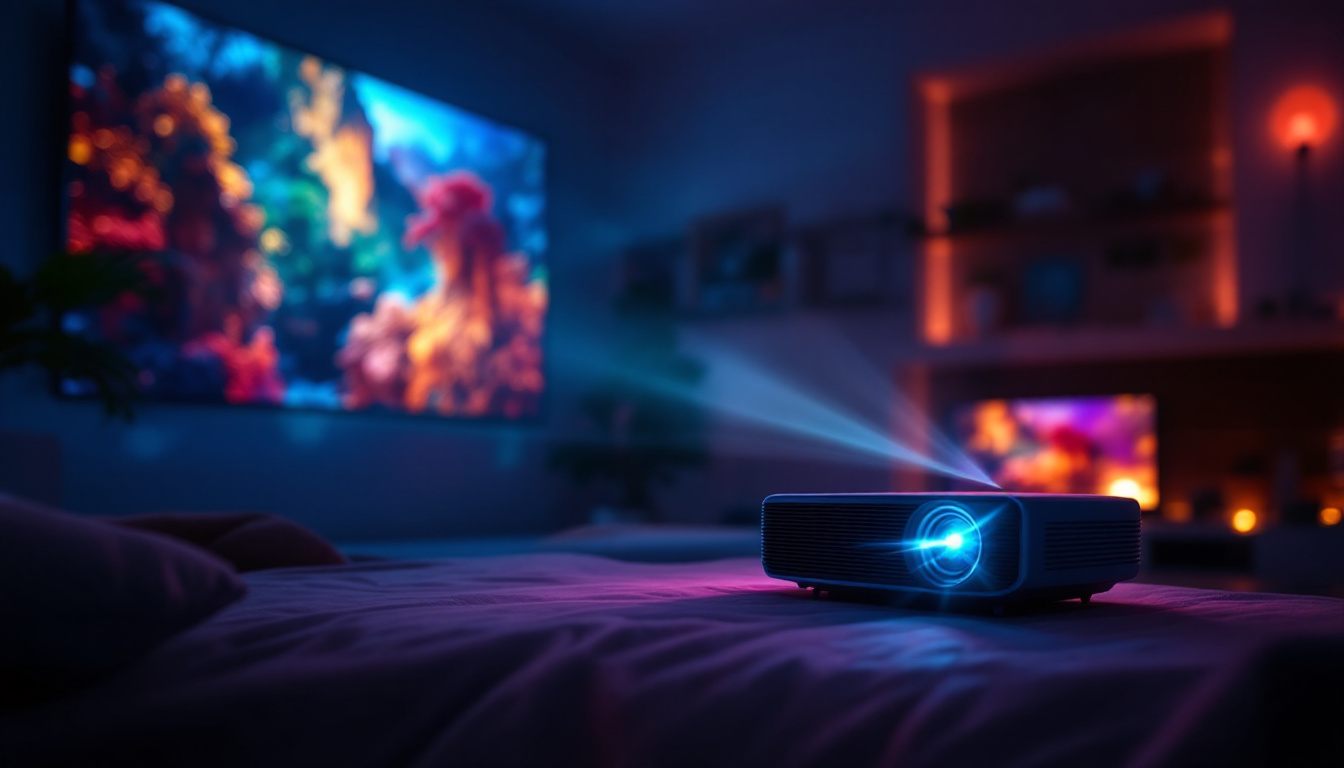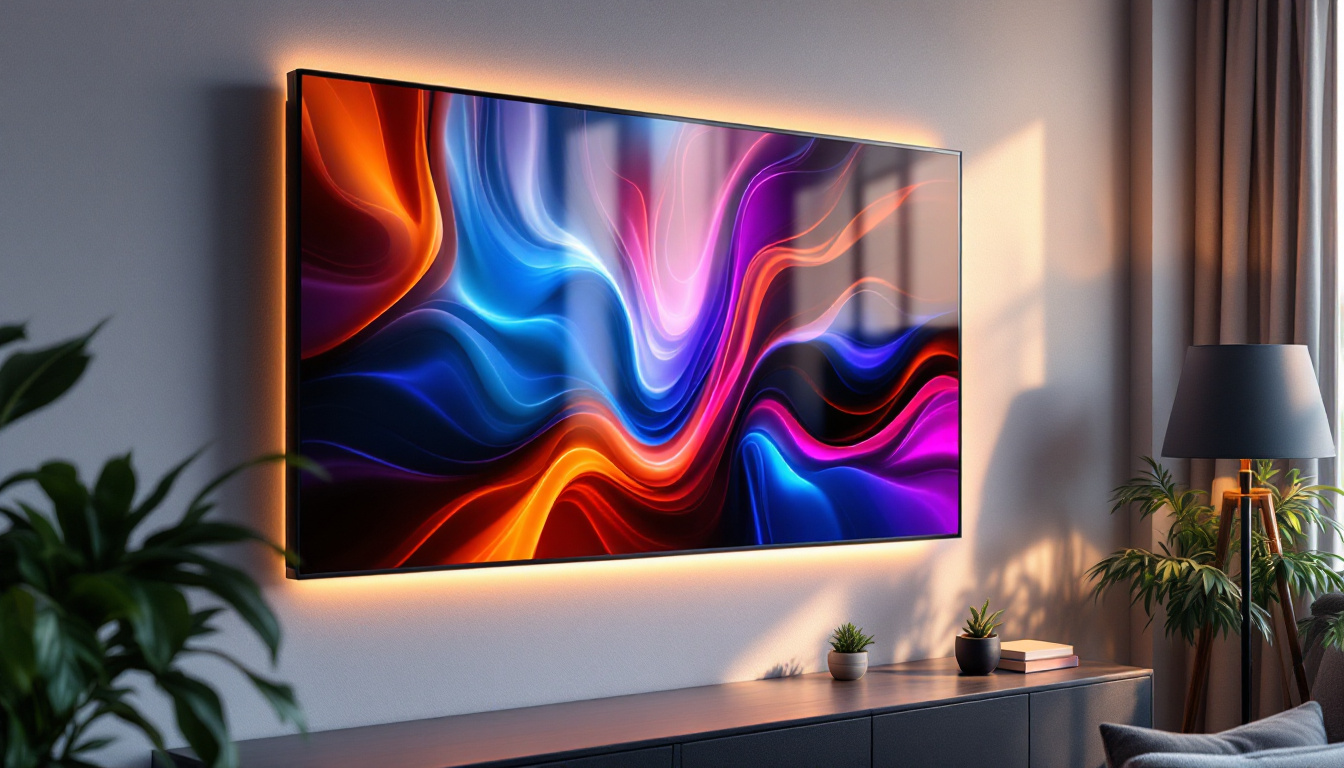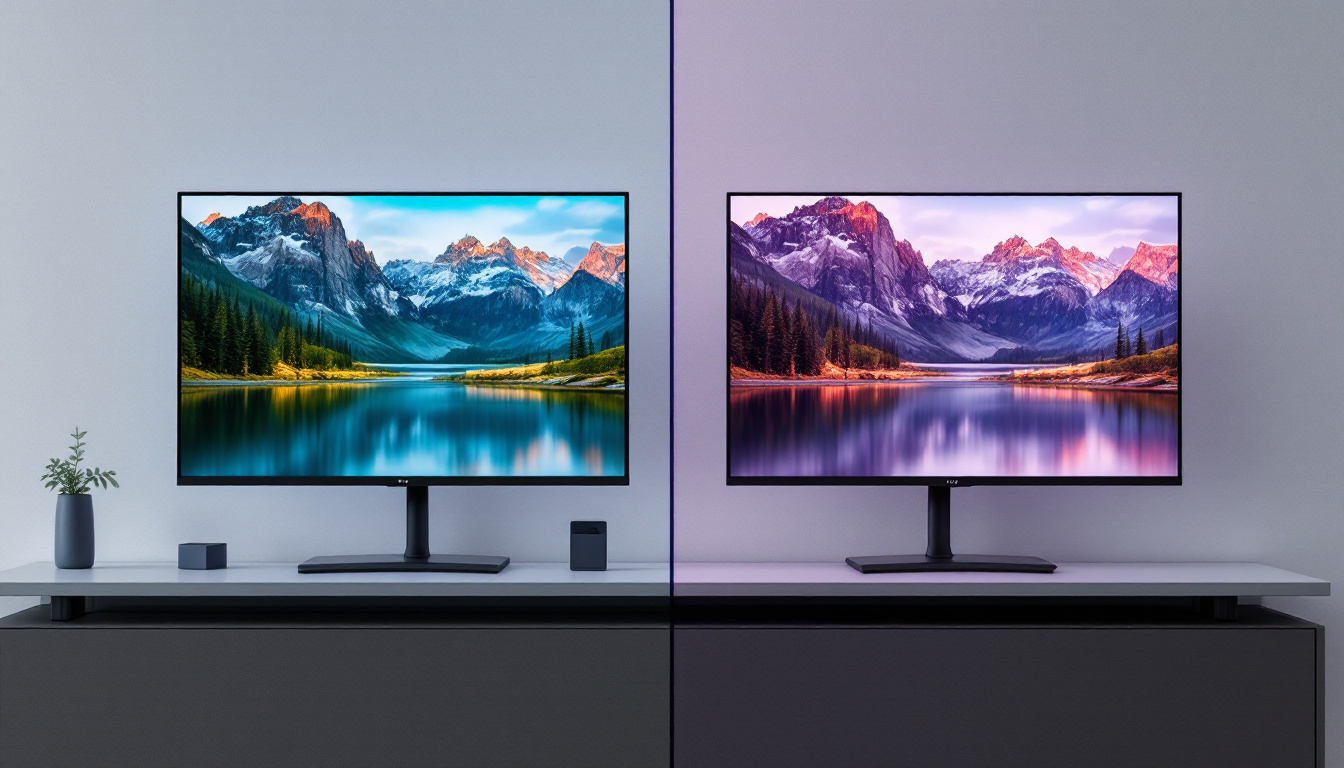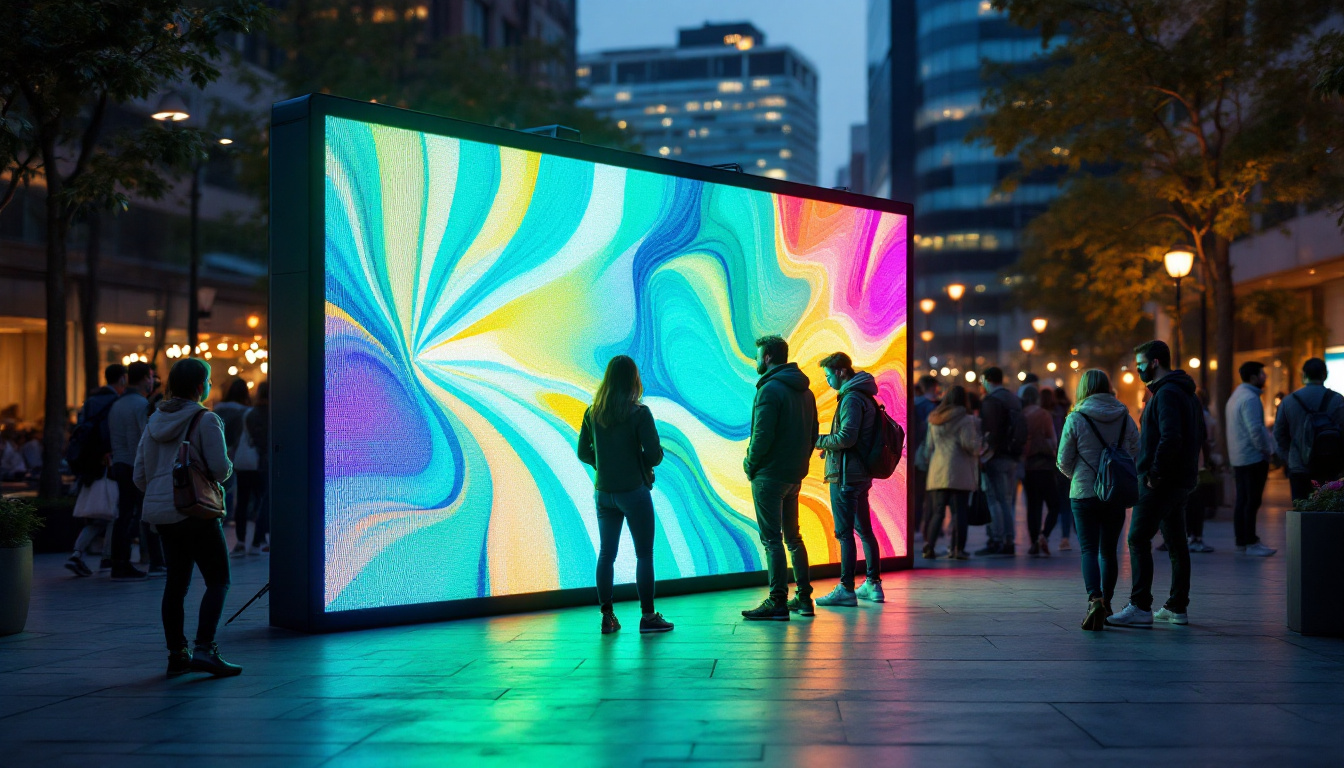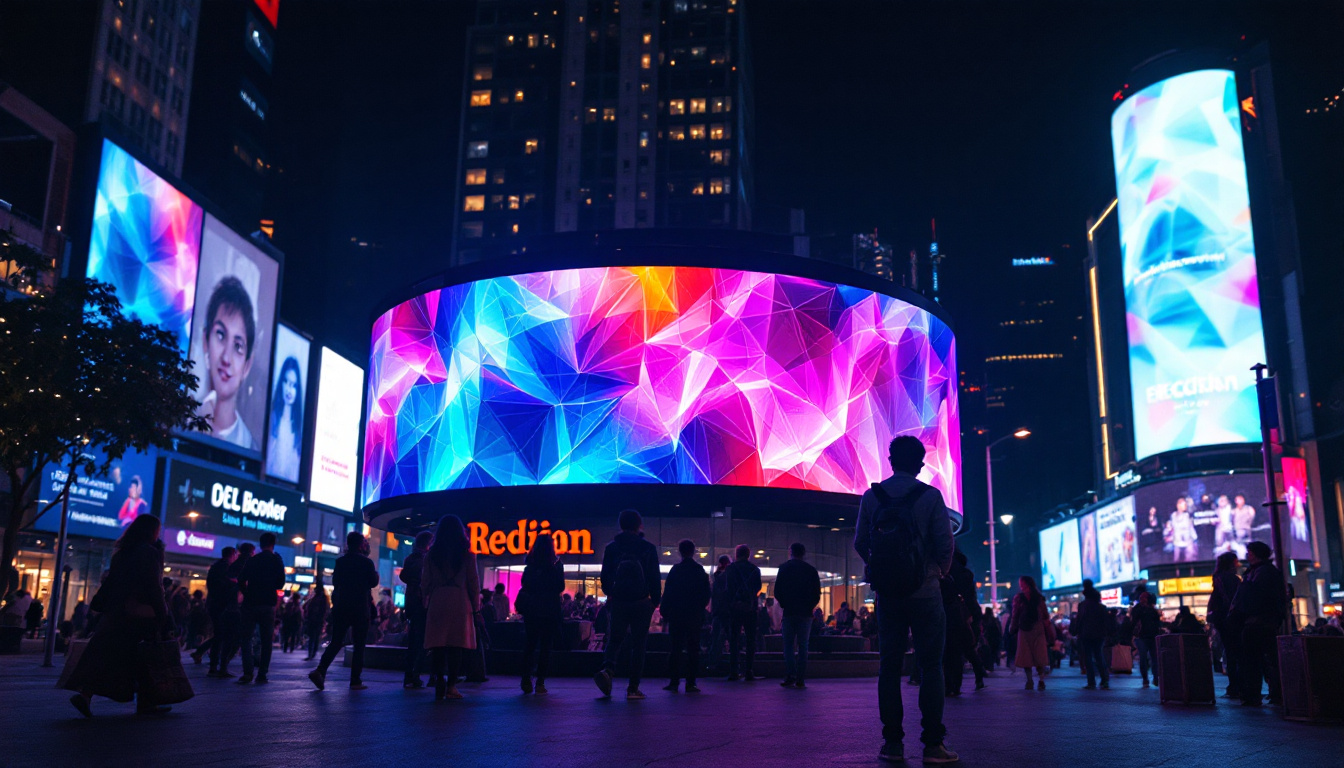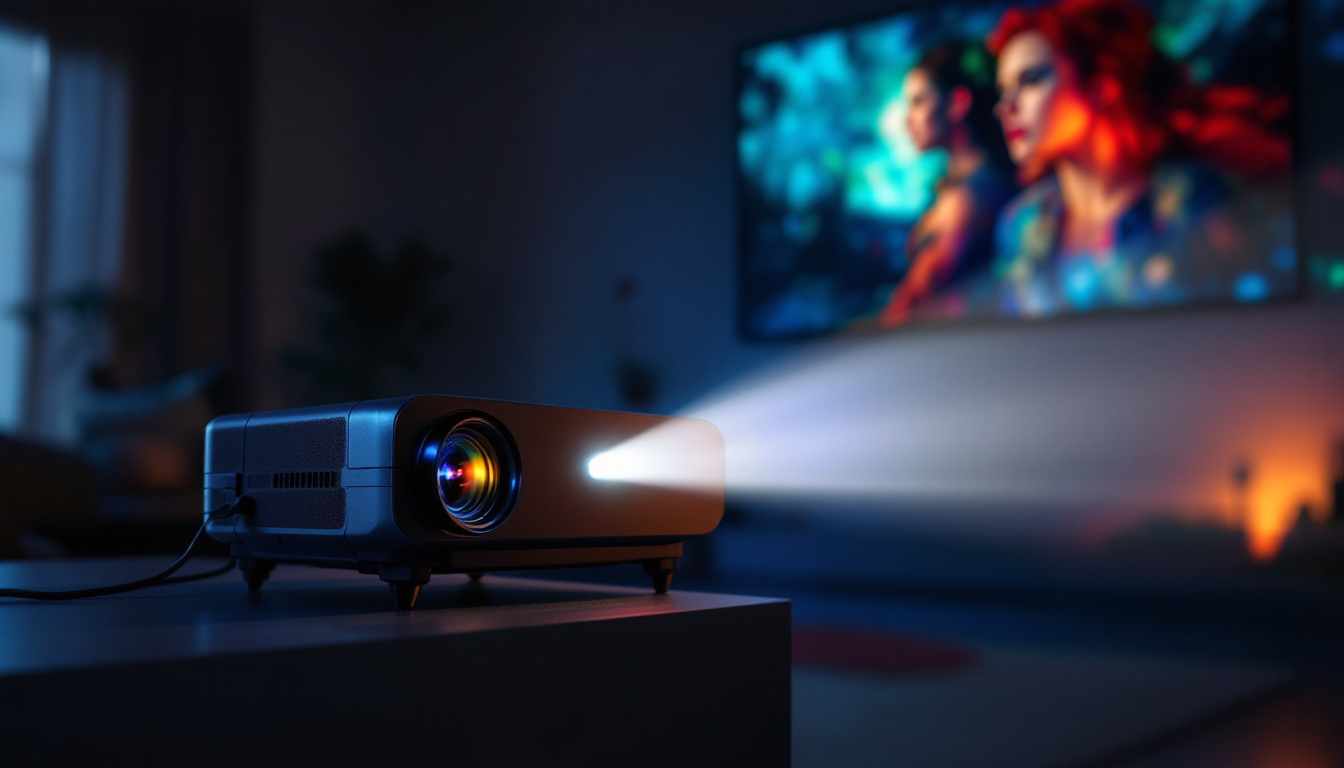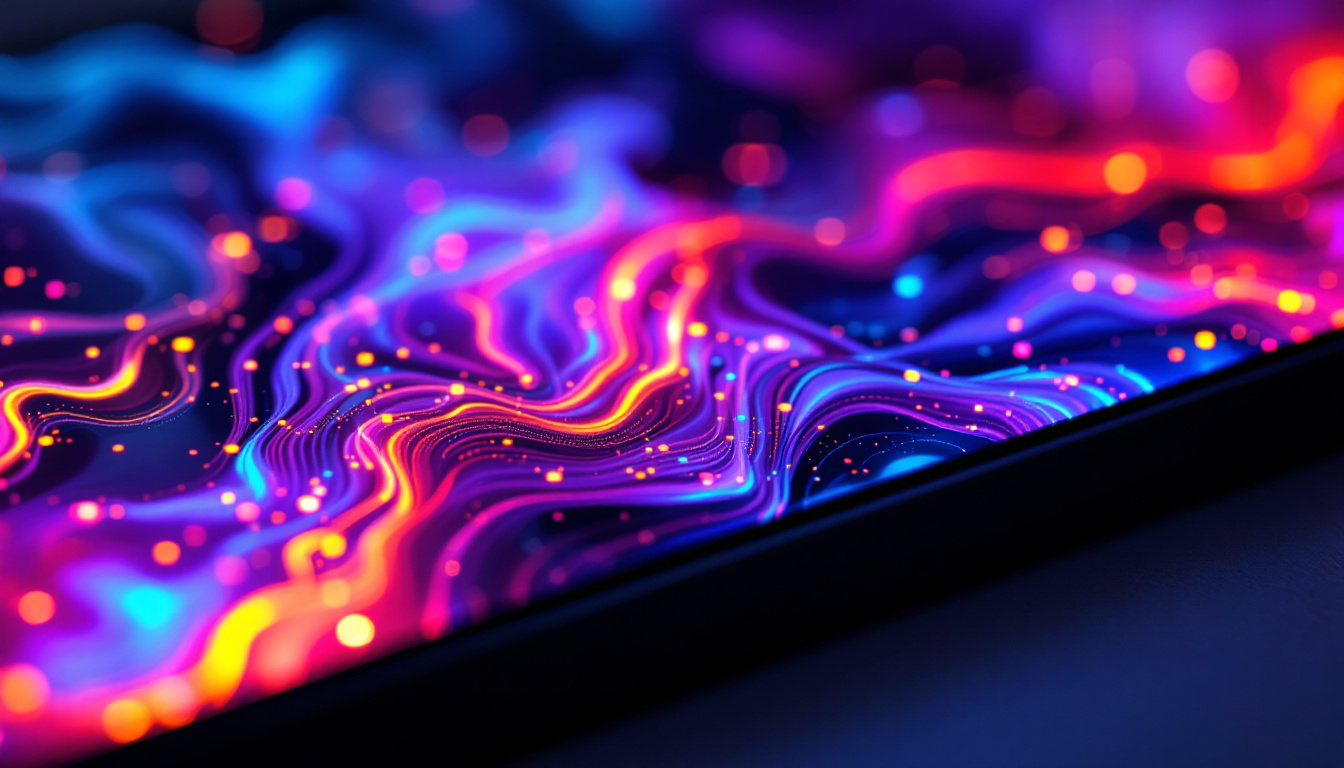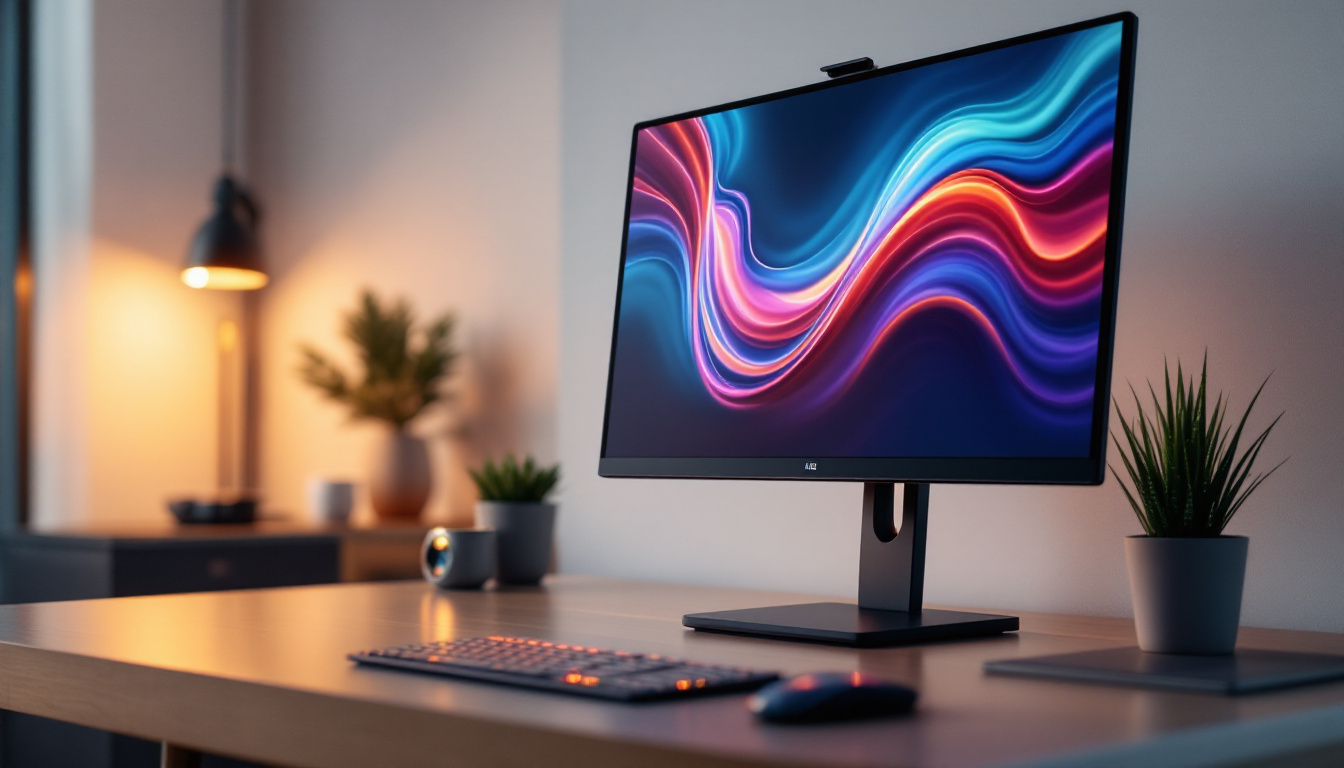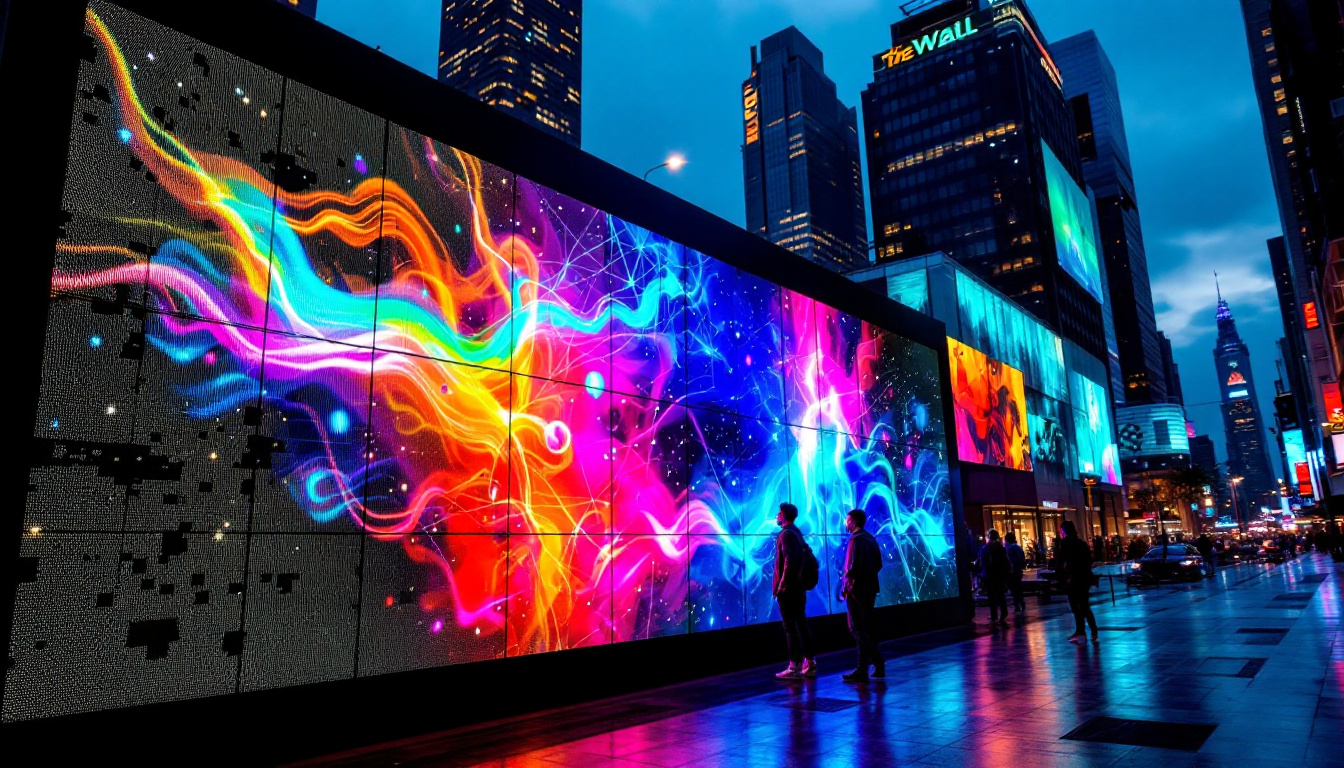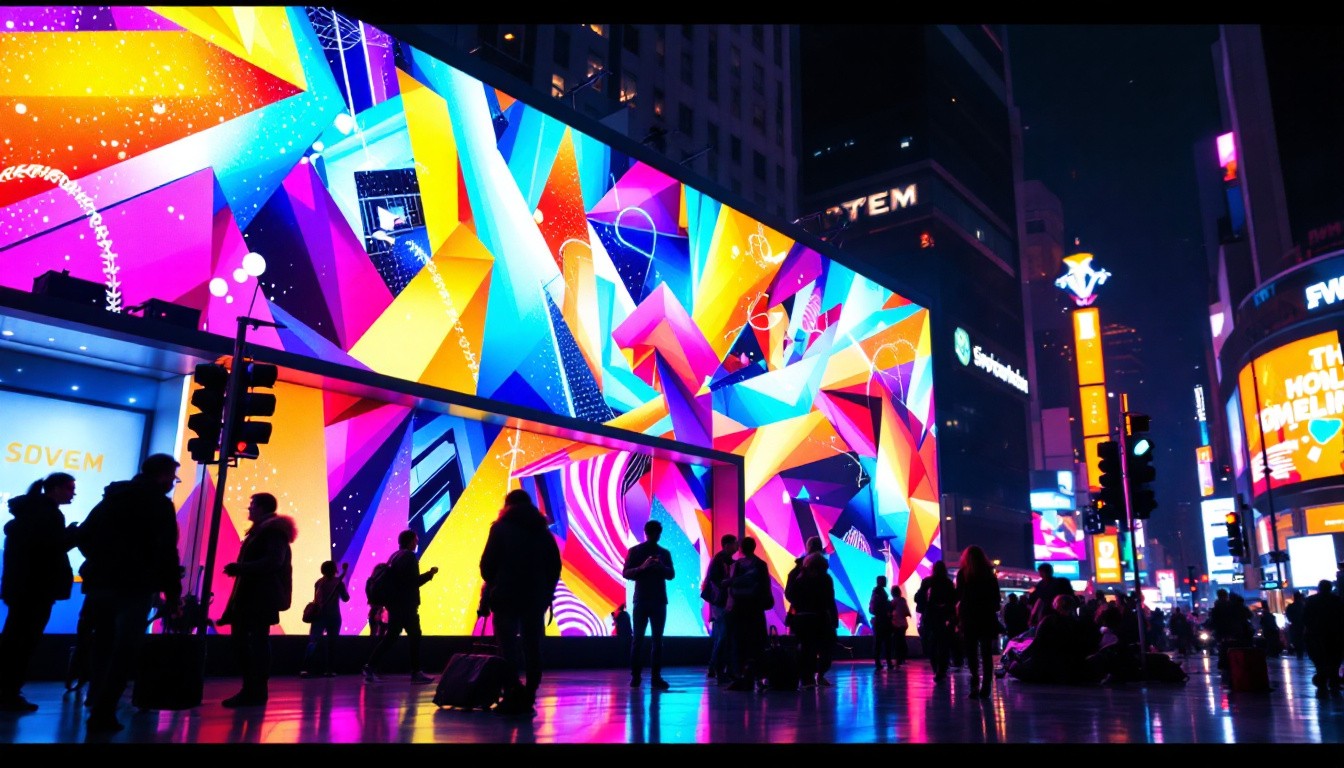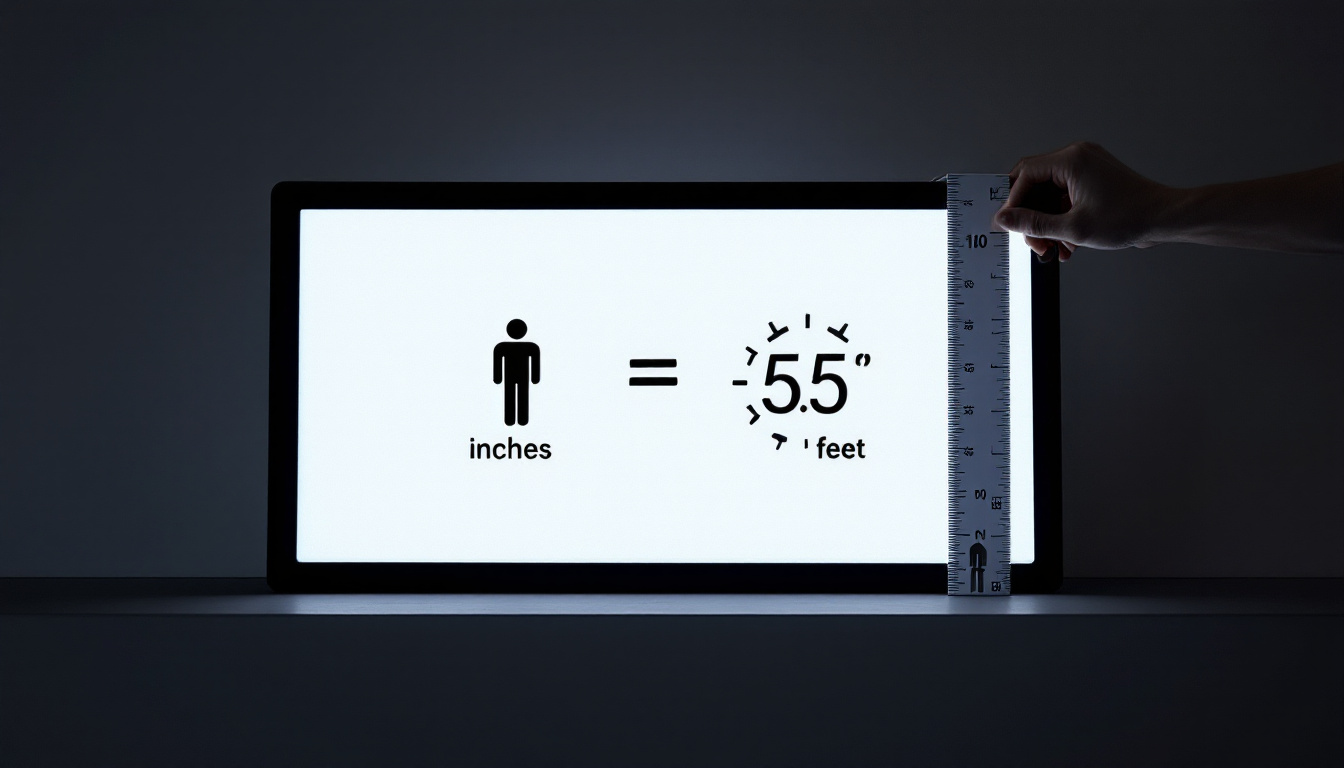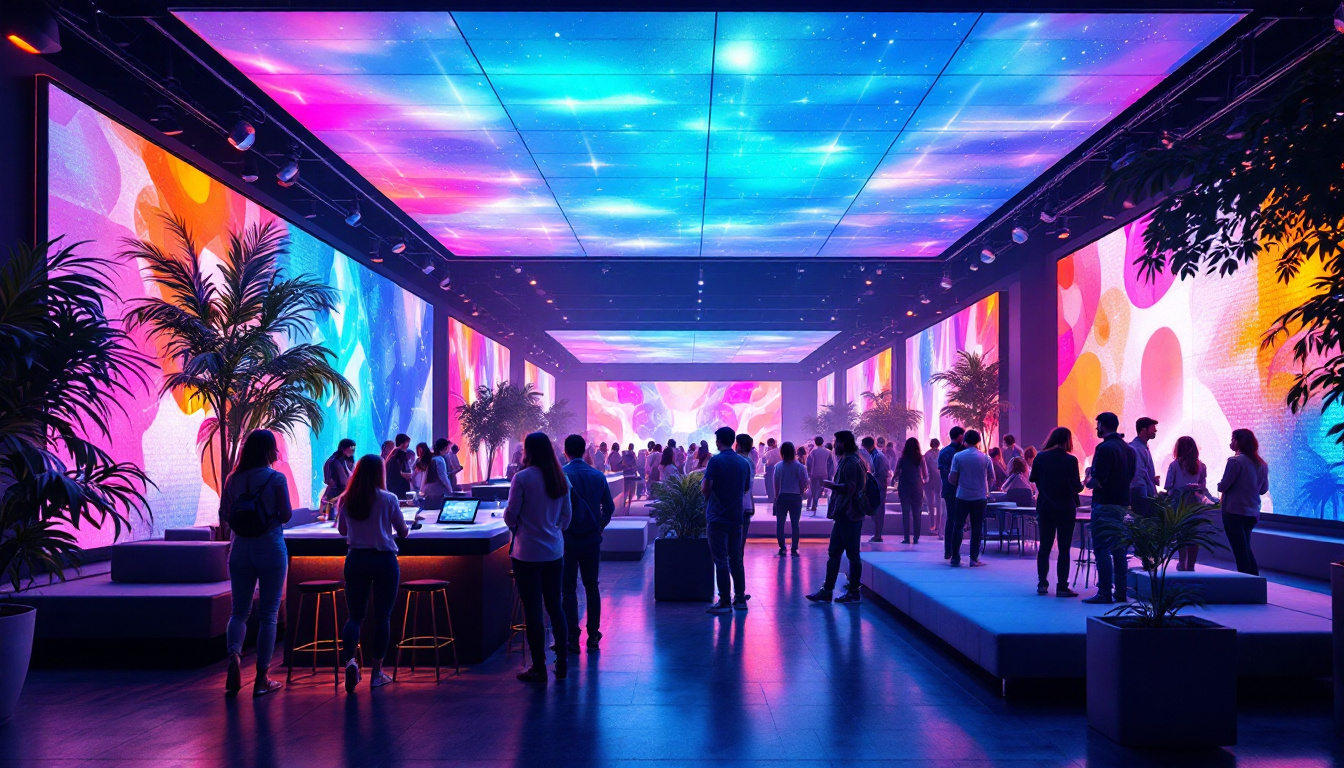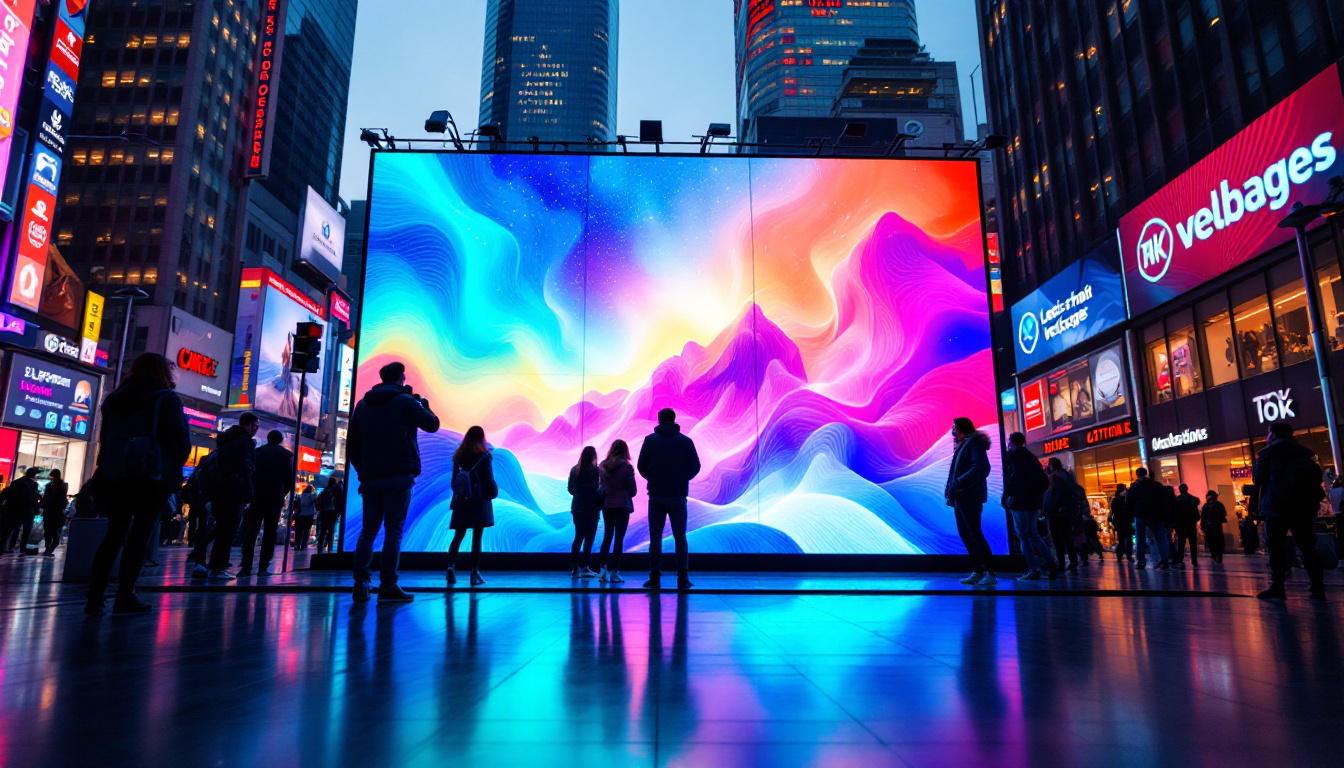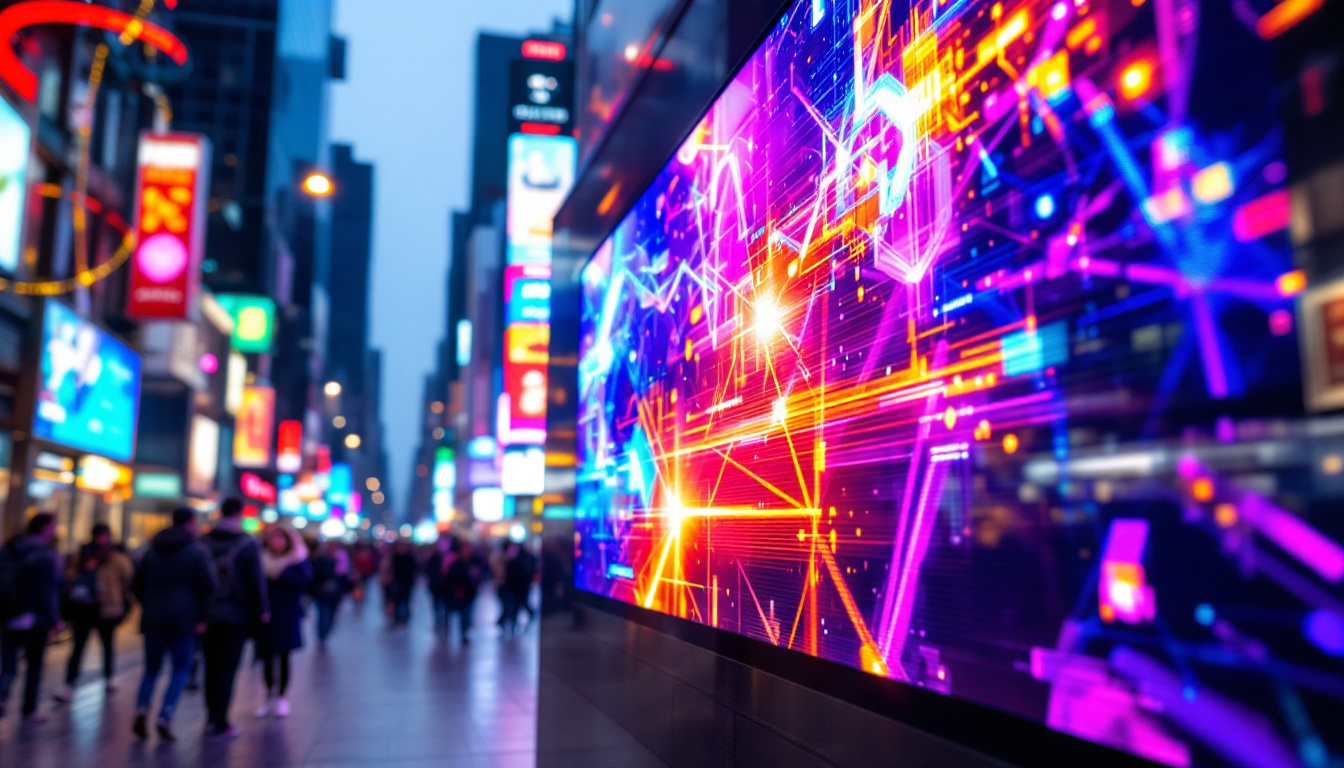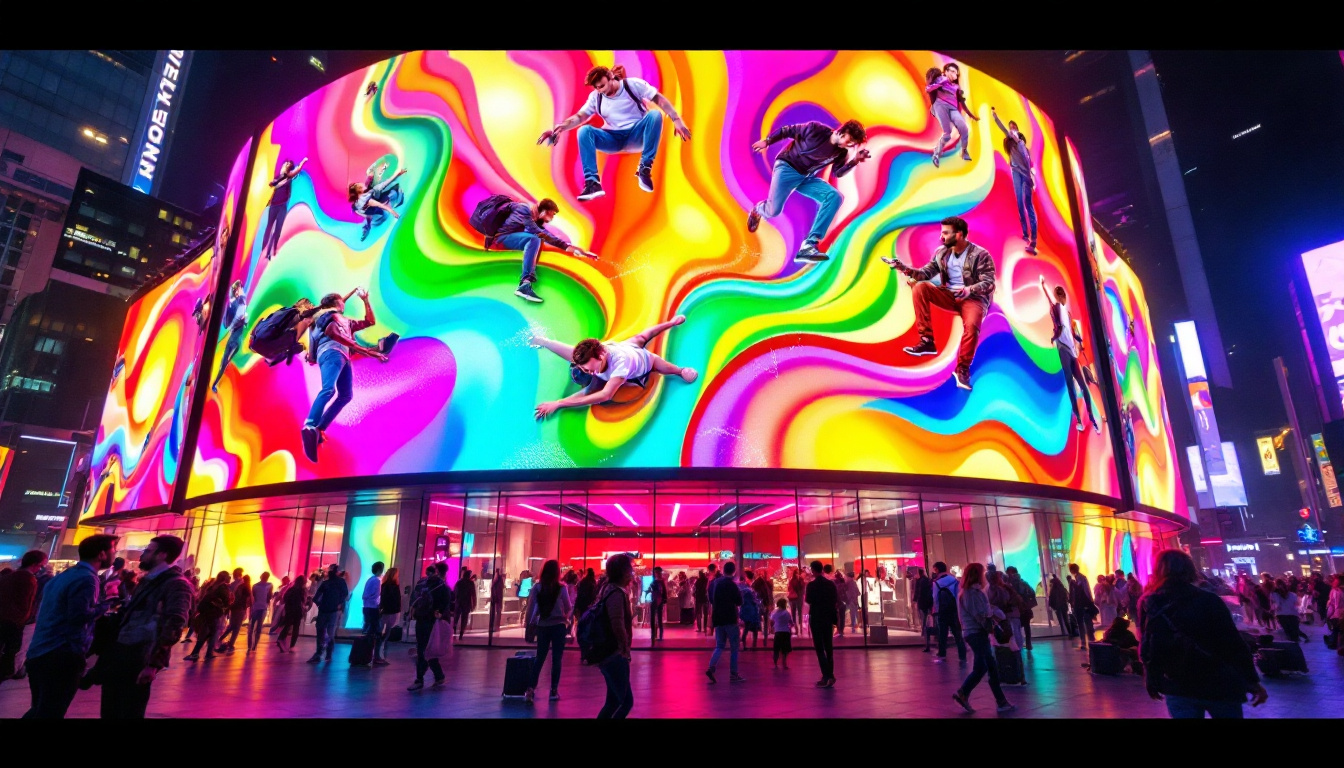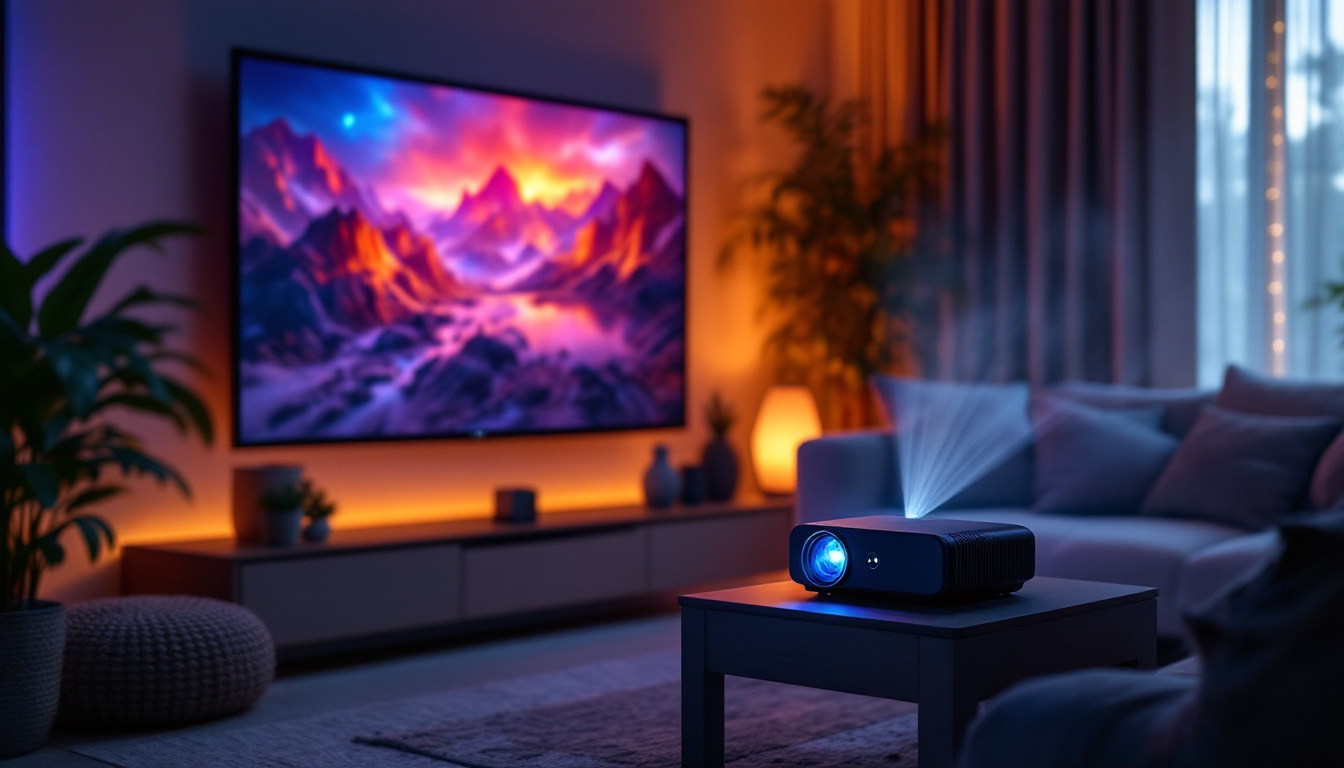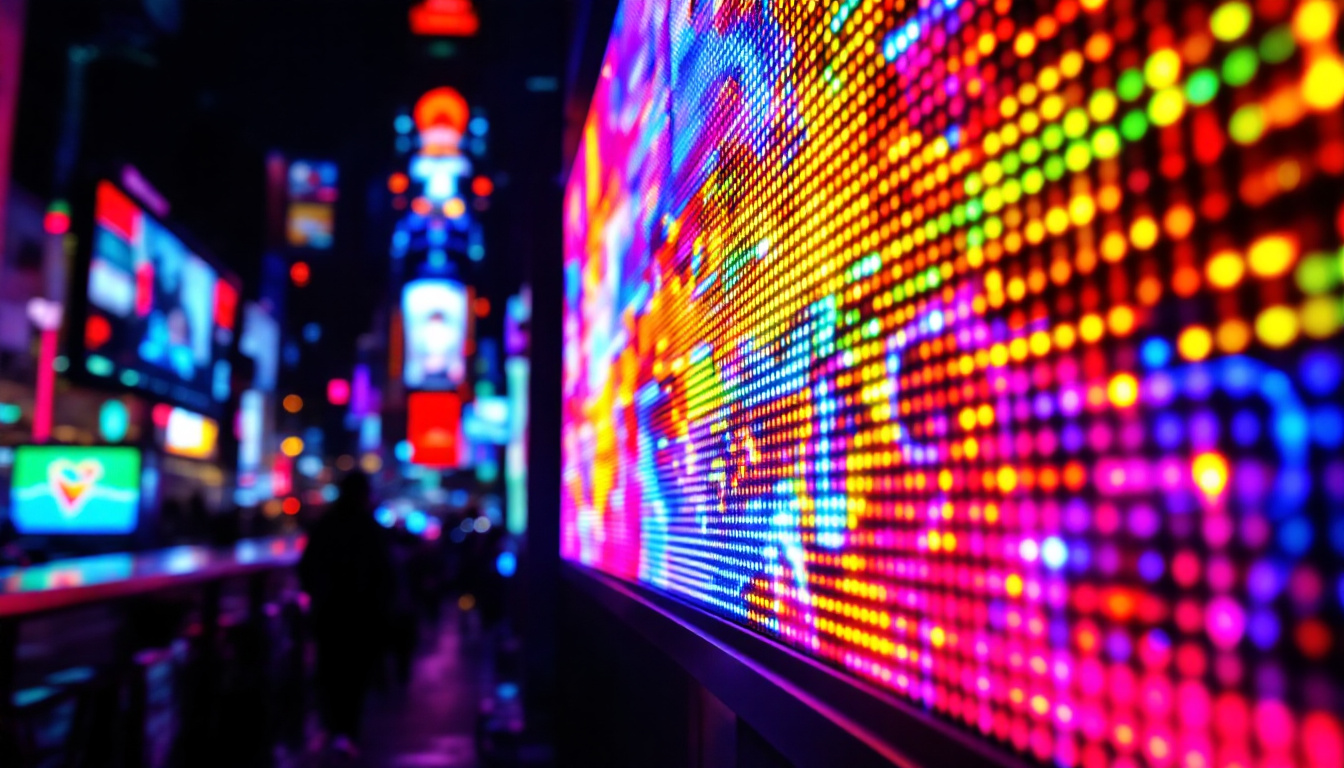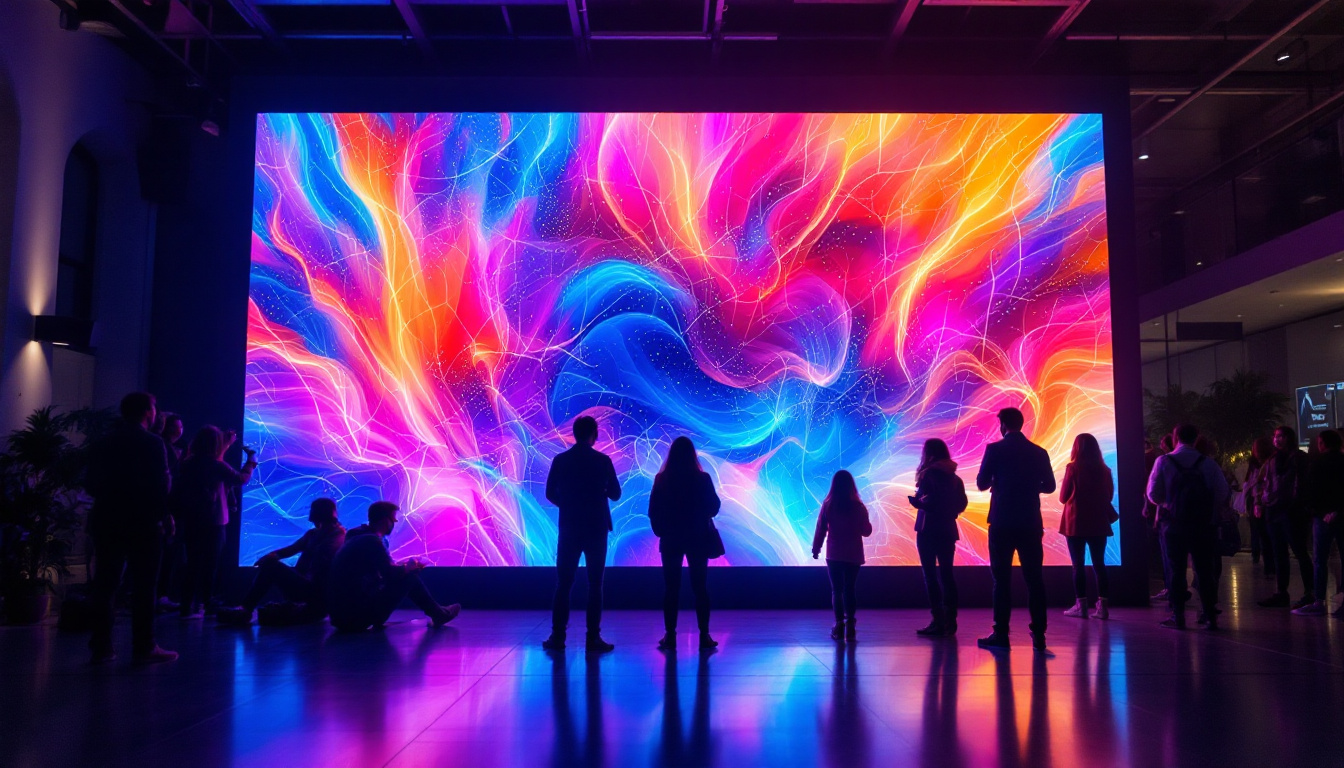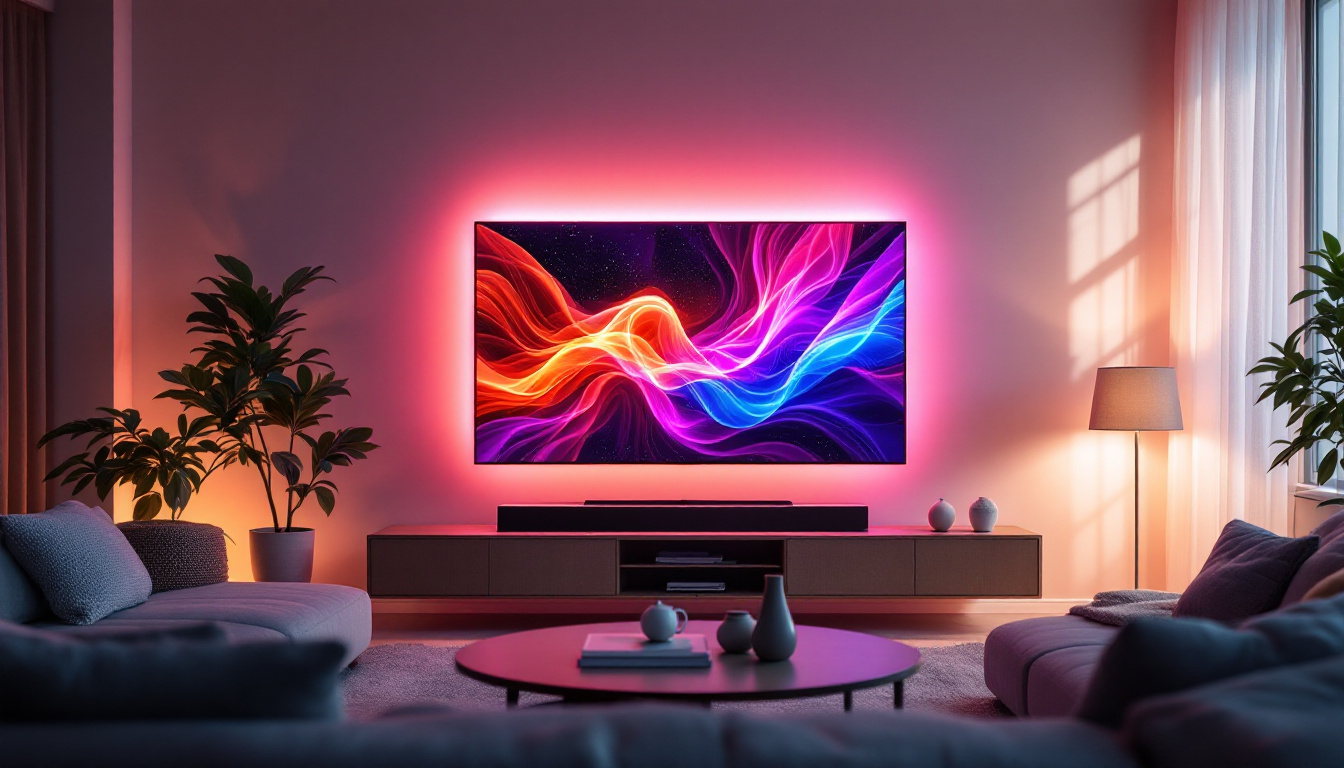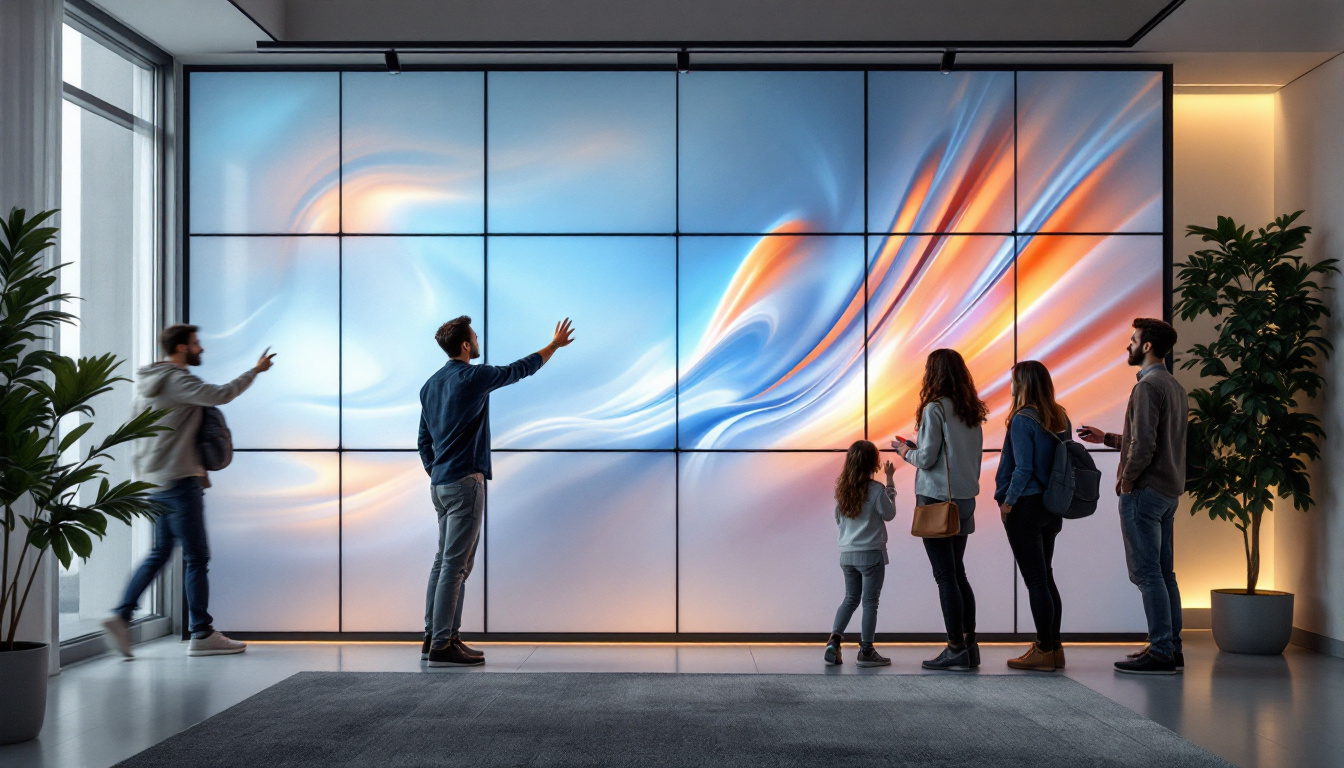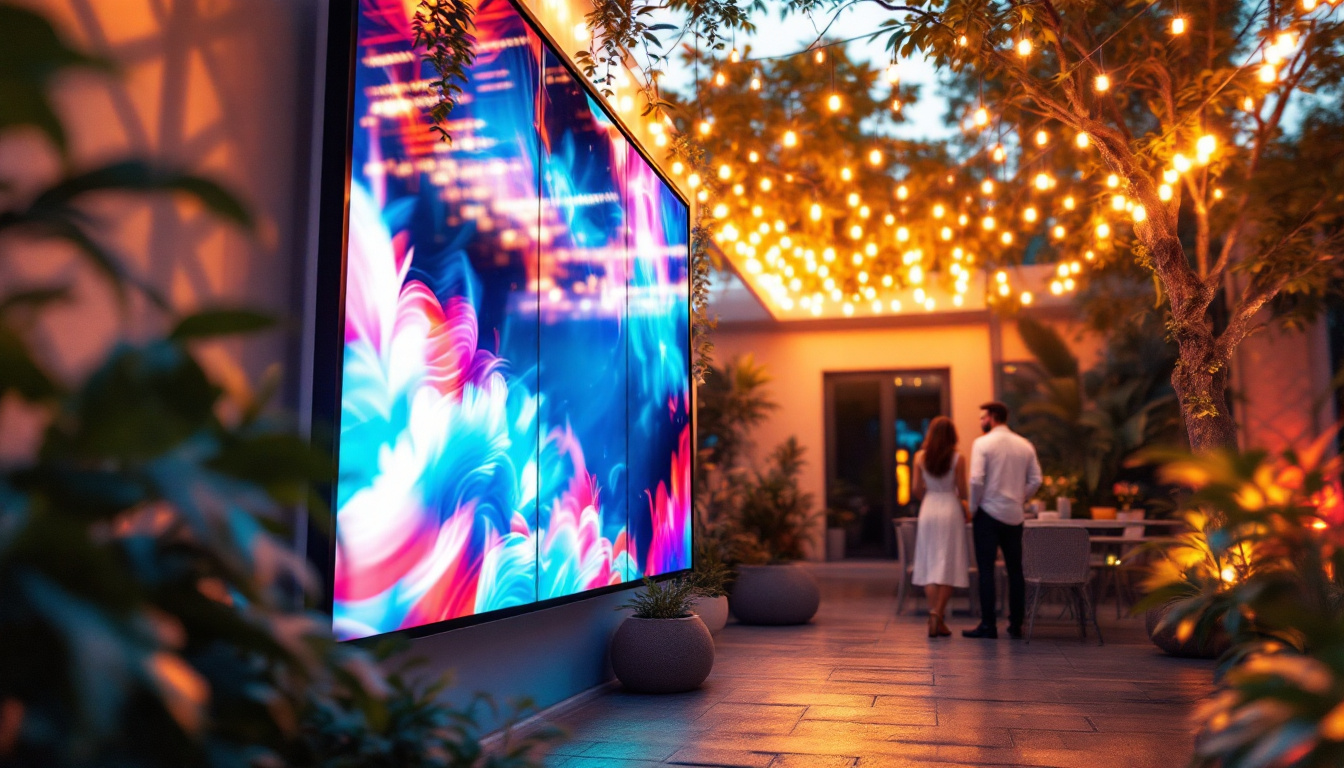In recent years, the evolution of display technology has led to the emergence of transparent monitor screens, a fascinating innovation that combines functionality with aesthetic appeal. These screens, often seen in futuristic settings, are not just a gimmick; they represent a significant leap in how we interact with digital content. This article delves into the intricacies of transparent monitor screens, focusing on LED display technology and its applications.
Understanding Transparent Monitor Screens
Transparent monitor screens are a unique type of display that allows users to see through the screen while still presenting digital content. This dual functionality opens up a myriad of possibilities in various fields, from retail to entertainment. Unlike traditional monitors, which are opaque, transparent screens blend the physical and digital worlds, creating immersive experiences.
How Transparent Screens Work
The technology behind transparent monitors primarily involves LED (Light Emitting Diode) displays. These screens utilize a combination of transparent materials and advanced LED technology to project images while allowing light to pass through. The key to their transparency lies in the use of a special type of glass or acrylic that can display images without obstructing the view behind it.
When an LED display is activated, it emits light that creates images or videos. The transparent nature of the screen means that the viewer can see the content while still being aware of the environment behind the display. This is achieved through a careful balance of brightness and contrast, ensuring that the projected images are vivid and clear against the backdrop.
Types of Transparent Displays
There are primarily two types of transparent displays: OLED (Organic Light Emitting Diode) and LCD (Liquid Crystal Display). Each has its own advantages and limitations.
- OLED Displays: These are known for their vibrant colors and deep blacks due to their ability to turn off individual pixels. OLED transparent displays offer superior image quality and are often used in high-end applications.
- LCD Displays: While typically less vibrant than OLEDs, transparent LCDs are more cost-effective and can still deliver impressive visuals. They are commonly used in commercial settings, such as advertising and retail.
Applications of Transparent Monitor Screens
The versatility of transparent monitor screens has led to their adoption across various industries. From enhancing customer experiences in retail to revolutionizing the way information is displayed in public spaces, these screens are transforming how we perceive digital content.
Retail and Advertising
One of the most prominent applications of transparent monitors is in the retail sector. Retailers are increasingly using these screens to create engaging displays that capture the attention of customers. Imagine walking past a storefront where a transparent screen showcases a product while allowing you to see the items behind it. This not only enhances visibility but also creates a more immersive shopping experience.
Moreover, transparent displays can be used for interactive advertising. Customers can touch the screen to learn more about a product, watch a video, or even place an order. This interactivity can significantly increase customer engagement and drive sales.
Smart Home Integration
Transparent monitors are also making their way into smart homes. Imagine a kitchen equipped with a transparent screen that displays recipes, cooking videos, or even the weather while allowing you to see through it. This integration of technology into everyday life enhances functionality without compromising aesthetics.
Additionally, these screens can serve as digital windows, displaying information such as news updates or social media feeds while still allowing natural light to filter through. This fusion of technology and design is paving the way for smarter living spaces.
Entertainment and Gaming
In the realm of entertainment, transparent monitors offer unique possibilities for immersive experiences. They can be used in gaming setups to create a more engaging environment, where players can see through the screen while interacting with digital elements. This can enhance the overall gaming experience, making it more dynamic and interactive.
Furthermore, in the film and theater industry, transparent screens can be used to create stunning visual effects. By projecting images onto a transparent surface, filmmakers can achieve effects that were previously impossible, blurring the lines between reality and digital imagery.
Advantages of Transparent Monitor Screens
Transparent monitor screens come with a host of advantages that make them appealing for various applications. Their unique design and functionality offer benefits that traditional displays cannot match.
Enhanced Aesthetics
One of the most significant advantages of transparent monitors is their aesthetic appeal. They provide a sleek and modern look that can enhance the design of any environment. Whether in a retail space, a corporate office, or a home, these screens can blend seamlessly with the surroundings.
Moreover, the ability to see through the screen adds an element of sophistication, making them a popular choice for high-end installations. The visual impact of transparent displays can elevate the overall ambiance of a space, drawing attention and creating a memorable experience for viewers.
Space Efficiency
Transparent monitors are also space-efficient. Traditional displays require dedicated space and often create visual clutter. In contrast, transparent screens can be integrated into existing environments without taking up additional space. This is particularly beneficial in areas where real estate is limited, such as urban settings.
By utilizing vertical space and allowing visibility through the screen, these monitors help maintain an open and airy feel, which is increasingly important in modern design.
Interactivity and Engagement
The interactive capabilities of transparent monitors significantly enhance user engagement. By incorporating touch technology, these screens can respond to user inputs, allowing for a more personalized experience. This interactivity is particularly valuable in retail and advertising, where capturing customer attention is crucial.
Furthermore, the ability to layer digital content over physical objects creates a unique storytelling opportunity, enabling brands to convey messages in innovative ways. This level of engagement can lead to increased brand loyalty and customer satisfaction.
Challenges and Limitations
While transparent monitor screens offer numerous advantages, they are not without their challenges. Understanding these limitations is essential for anyone considering their implementation.
Cost Considerations
One of the primary challenges associated with transparent monitors is their cost. The technology involved in creating transparent displays is still relatively new, which can make them more expensive than traditional monitors. This higher initial investment may deter some businesses from adopting this technology, particularly small enterprises with limited budgets.
However, as technology advances and production processes become more efficient, it is anticipated that the costs will decrease over time, making transparent monitors more accessible to a broader audience.
Brightness and Visibility Issues
Another limitation of transparent screens is their brightness and visibility in different lighting conditions. While advancements have been made, achieving optimal visibility in bright environments can be challenging. The transparency of the screen can sometimes compromise the clarity of the displayed content, particularly in direct sunlight.
To mitigate this issue, manufacturers are continuously working on improving the brightness levels and contrast ratios of transparent displays. However, potential users must consider their specific environment and lighting conditions before investing in this technology.
Durability and Maintenance
Durability is another concern with transparent monitors. The materials used in these displays can be more susceptible to damage compared to traditional screens. Additionally, maintenance can be more challenging due to the transparent nature of the surface, which may require specialized cleaning products to avoid streaks or damage.
As with any technology, proper care and maintenance are essential to ensure longevity and optimal performance. Users should be prepared to invest time and resources into maintaining their transparent displays.
The Future of Transparent Monitor Screens
The future of transparent monitor screens looks promising, with ongoing advancements in technology and increasing demand across various sectors. As manufacturers continue to innovate, we can expect to see improvements in image quality, durability, and affordability.
Integration with Augmented Reality
One of the most exciting prospects for transparent monitors is their integration with augmented reality (AR). As AR technology continues to evolve, transparent screens could become a vital component in creating immersive experiences that blend the digital and physical worlds seamlessly.
Imagine a transparent monitor that overlays digital information onto real-world objects, providing users with contextual data in real-time. This could revolutionize industries such as education, healthcare, and tourism, offering interactive learning experiences and enhancing information delivery.
Expanding Use Cases
As awareness of transparent monitor technology grows, new use cases are likely to emerge. Beyond retail and entertainment, industries such as automotive, architecture, and healthcare may begin to explore the potential of transparent displays. For instance, car manufacturers could use transparent screens for heads-up displays, providing drivers with essential information without obstructing their view of the road.
In architecture, transparent screens could be used in building facades, providing information about the building’s energy consumption or displaying art while maintaining visibility. The possibilities are virtually limitless as more sectors recognize the benefits of this innovative technology.
Conclusion
Transparent monitor screens represent a fascinating intersection of technology and design, offering unique advantages that traditional displays cannot match. From enhancing retail experiences to integrating seamlessly into smart homes, these screens are paving the way for a more interactive and visually appealing future.
While challenges such as cost and visibility remain, ongoing advancements in technology promise to address these issues, making transparent monitors more accessible and practical for a broader range of applications. As industries continue to explore the potential of transparent displays, the future looks bright for this innovative technology.
In a world where digital content is becoming increasingly integral to our daily lives, transparent monitor screens are set to play a significant role in shaping how we interact with information, bridging the gap between the physical and digital realms.
Discover the Future of Display Technology with LumenMatrix
Ready to elevate your visual experience and engage with your audience like never before? Explore LumenMatrix’s innovative LED display solutions, designed to bring your brand to life. From Indoor and Outdoor LED Wall Displays to specialized solutions like Vehicle, Sports, and Floor LED Displays, LumenMatrix offers a diverse range of products to meet your unique needs. Embrace the future of digital signage with our Transparent LED Displays and see how our commitment to revolutionizing visual communication can transform your space. Check out LumenMatrix LED Display Solutions today and step into a world where your message shines with impact and clarity.


